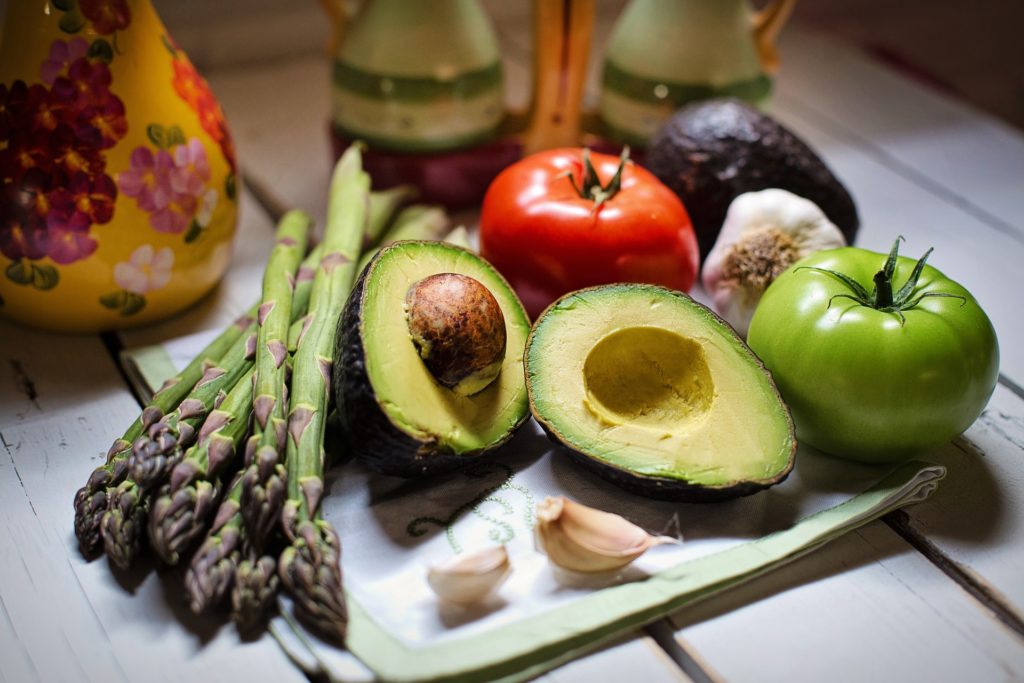Do you eat enough fruits and vegetables in your diet?
Vegetables are low in calories, full of health benefits, and you can often pile your plate high with them at minimal caloric impact. They help fill you up without weighing you down (literally).
How do you do with fruits? Do you eat enough of them? And more importantly, do you sample some fruits from each color of the rainbow to get the maximum health benefits available to you?
How To Add a Rainbow of Fruits and Vegetables In Your Diet
Many people find fruit easier to add to their diet because it’s sweet, compared to vegetables. Unfortunately, the better way to do it is to flip that equation – and eat more vegetables and fewer fruits. Just make sure you get the proper amount of both.
The great thing about fruits and vegetables is that you can pick and choose which form you prefer. Frozen, canned and fresh fruits and vegetables all have a positive impact on your diet efforts. But of course, you have to use common sense, like avoiding fruit pieces that are drowning in heavy (sugary) syrup.
You need to make a list of the rainbow fruits and vegetables and make it a point to try at least one new item per week. Take the color red, for example. You might list the following and then make it a point to incorporate them each week:
- Apples
- Strawberries
- Watermelon
- Grapefruit
- Cherries
- Cranberries
- Grapes
- Pomegranates
- Raspberries
- Tomatoes
- Beets
- Cabbage
- Radishes
- Rhubarb
- Red Potatoes
- Peppers
Do the same for each color of the rainbow. Look up recipes for it online and then see how creative you can get. Take turnips for instance – some people eat them raw, others boil them, and some mash them up.
Don’t Fry ‘Em
Another common-sense rule is to try to avoid frying your vegetables – because when you’re trying to shed pounds, the added oil makes it that much harder to achieve your weight loss goals. If you really like fried vegetables, rather than raw or boiled, then try roasting them in the oven with a dash of olive oil, so it’s healthier for you.
Some people complain about the cost of fruits and vegetables – and it can get pricey if you aren’t planning for it. Look for sales that are going on and check circulars in your area to see which store has the best deals.
Pack Your Lunch So There Are No Excuses
If you work outside of the home, then you know the temptations and appeal of dining out at lunchtime. It gives you a break from the office, and it tastes great. Even people on a budget often keep room in their finances for restaurant lunches – and that can be a bad decision for a dieter.
Many restaurants give portions that are two to three sizes bigger than what you should be eating. And they sneak fat and calories into meals that sound healthy, but really don’t do any favors for your diet.
Planning ahead and packing your lunch is usually better for you when you want to lose weight. You can now buy insulated containers so that your meal can stay hot or cold for you. This is more advanced than the traditional thermos that used to come in children’s lunchboxes over the decades.
Make sure you pack some healthy snack options. Instead of grazing on sweets and candy, you’ll be able to pull out a baggie of fresh fruit or vegetables to help you get a quick pick-me-up in the meal department.
You can still get a break from the office with a lunch that you pack from home. You can go to a park for a relaxing picnic while you read a book, and just take your lunch outside on the company property and find a good spot to enjoy your meal.
What To Eat Before & After Your Workouts
People are often amazed at how small dietary changes can reap huge results with their fitness goals. Whether you want to build muscle or improve your cardio performance, this free report, 15 Foods To Eat Before & After Your Workout provides details on the foods you should eat to help you achieve better nutrition and a new personal best.



